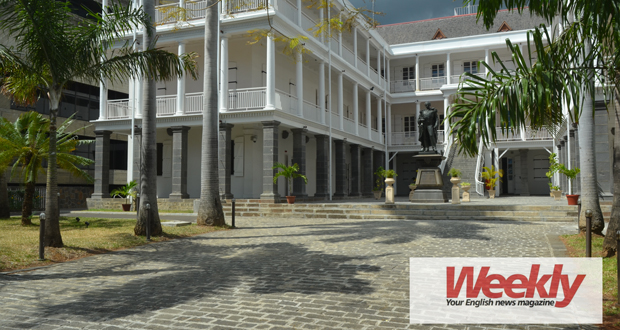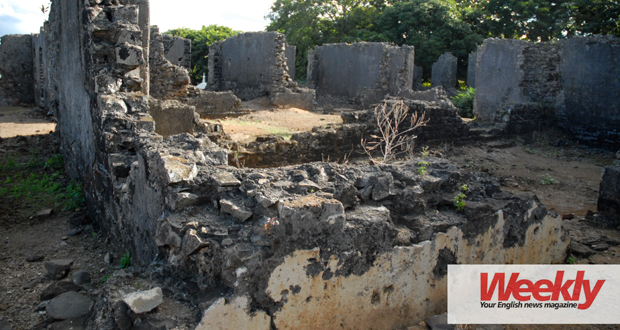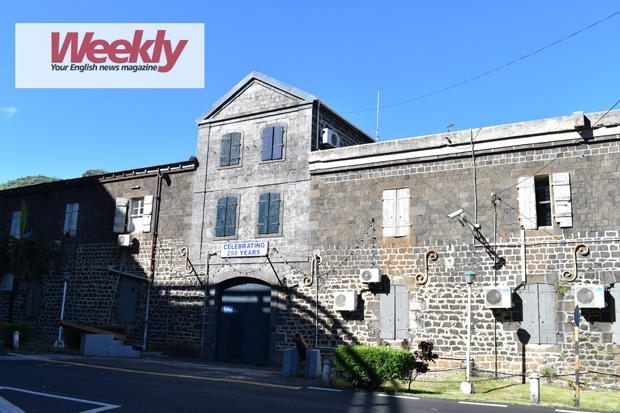Publicité
Slaves: how they built Mauritius
Par
Partager cet article
Slaves: how they built Mauritius


This year marks the 183rd anniversary of the abolition of slavery. How have slaves contributed to the making of Mauritius? As independent Mauritius turns 50, Weekly remembers.
Slavery and its abolition in 1835 seem so distant. Yet, tangible remnants of this period still exist in modern Mauritius. Historians Jocelyn Chan Low and Satyendra Peerthum first mention the infrastructural legacy of slaves. “The contributions of slaves are manifold. The ones most visible today are all the buildings erected in the 18th and early 19th centuries: the Government House, the Citadelle, the military and the civil hospitals in Port Louis, and all the colonial buildings,” enumerates Chan Low. “Peerthum adds to the list the Supreme Court building, the Line Barracks and Fort Frederik Hendrik, in Old Grand Port, which is now a museum. The 2011 report of the Truth and Justice Commission also sheds light on how slaves were used to produce bricks, lime, wood and iron works in high demand in construction.
A second aspect historians mention is the land-clearing role of slaves in developing Mauritius into a sugar colony. Jimmy Harmon, country specialist for Mauritius and the Seychelles in the Vitality Democracy Project of the University of Gothenburg in Sweden, explains that sugar cane was introduced from Java by the Dutch who thus laid the economic foundation of Mauritius as a sugar colony. Slaves were used in the field to produce sugar that he describes as “white gold”. Peerthum is convinced that without forced labour, the sugar industry would never have taken off in Mauritius.
Chan Low, who is also a former member of the Indian Ocean office for the Slave Route project of the UNESCO, adds that Mauritian Creole is another direct legacy of slavery. “Creole is a meeting between the master and their slaves. The master had to communicate with their slaves. There’s a debate however between Robert Chaudenson, who claims that our Creole is from Reunion, and Philip Baker, who contends that Mauritian Creole is of West African origin as it resembles Haitian Creole,” says Chan Low.
Moreover, Chan Low points out the other contributions of slavery to Mauritius like brede songe and the technique of fishing using traps which both originate from Madagascar. Setting fire to sugar cane fields to ease sugar cane harvest and mining techniques were also introduced to colonists by slaves according to Chan Low.
For Peerthum, slaves also took part in the peopling of Mauritius. “Camp Yoloff on the outskirts of Port Louis for example is named after West African slaves who lived there,” says the researcher at the Aapravasi Ghat Trust Fund. The latter also recalls that slaves were not only Africans, but also Indian, Malay, Chinese and so on.

Systemic occultation
Mauritians seem unaware of many of the aspects of slave history. Harmon blames our educational system. “When we study some history topics at primary level, it’s more textbook knowledge for exam purposes. We don’t give the opportunity to our teachers and pupils to connect with the national history. Even the nine-year schooling reform has failed to lay emphasis on history,” deplores the researcher. Chan Low blames textbooks too, where “slaves are always depicted as maroons on the loose while La Bourdonnais is praised.”
For Peerthum, while slaves did all the harsh manual work to develop Port Louis under La Bourdonnais, the latter had the vision. “We shouldn’t forget the context of Mahé de La Bourdonnais’ arrival in Mauritius. At the time, the viability of the colony was questioned. By the end of La Bourdonnais’ governorship, Isle de France – as Mauritius was known under the French – was viable,” argues Peerthum. Peerthum, who nonetheless agrees that Mauritians do not know about their history as it is not taught at school. He illustrates his claim by stating that the Aapravasi Ghat had 200,000 visitors from November 2014 till today, most of whom were Mauritians “eager to learn about their history”.
Memoralisation: remembering slaves’ contributions
What can be done to popularise the contributions of slaves to Mauritius? In its report, the TJC considered that the slaves “contribution to Mauritius [should be] recognised and publicised in permanent and public spaces ...” The report has made numerous recommendations. Some of them include: the creation of a database gathering lists of ships calling at Mauritius and their cargo, a national genealogy centre to enable Mauritians of slave descent to recreate their genealogical trees, the introduction of Mauritian history at all levels in the school curriculum, and the establishment of an intercontinental slavery museum.
For Harmon, developing popular education is important. For instance, on 27 January, members of the 1st February Diocesan Committee of the Catholic Church and Vijaya Teelock, the recently-appointed president of the International Scientific Committee of the UNESCO Slave Route project, were at Cassis to interact with the inhabitants on their history. Harmon advocates “developing a sense of shared history”. “Slavery and indenture are two important events that have shaped Mauritius. We cannot learn about these two historical tragedies in isolation because there’s a continuum in terms of economic disempowerment and social dynamics. It is an awareness of both that can help us better understand our present,” posits the researcher.
Both Chan Low and Peerthum argue that slavery, and by extension indenture and the path to independence, should be better taught at school. “I gather that the new nine-year schooling curriculum includes slavery only up to grade 7. Instead of removing history from our school curriculum, we should teach it at secondary level too. You can’t make a nation without its history,” Chan Low believes. He is also of the opinion that documentaries, conferences, press articles and institutions like the Nelson Mandela Centre for African Culture and the Centre for Research on Slavery and Indenture of the University of Mauritius have a role to play in popularising our history.
As independent Mauritius turns 50, let’s not forget the men and women brought into servitude to this island and who, with their labour, helped lay the foundations of modern Mauritius. Our history is primordial in understanding our present and building our future.

For more views and in-depth analysis of current issues, Weekly magazine (Price: Rs 25) or subscribe to Weekly for Rs110 a month. (Free delivery to your doorstep). Email us on: weekly@lexpress.mu
Publicité
Publicité
Les plus récents






